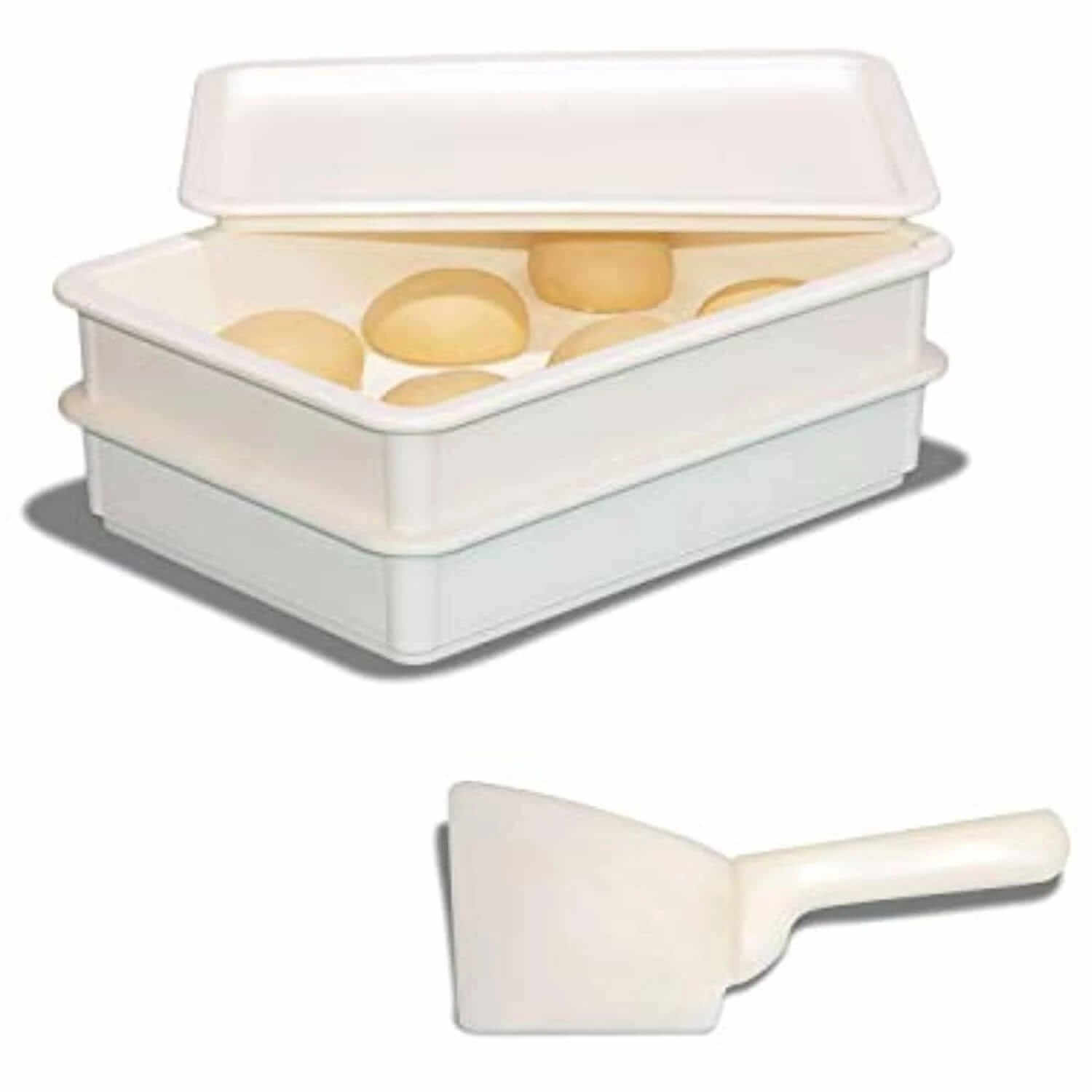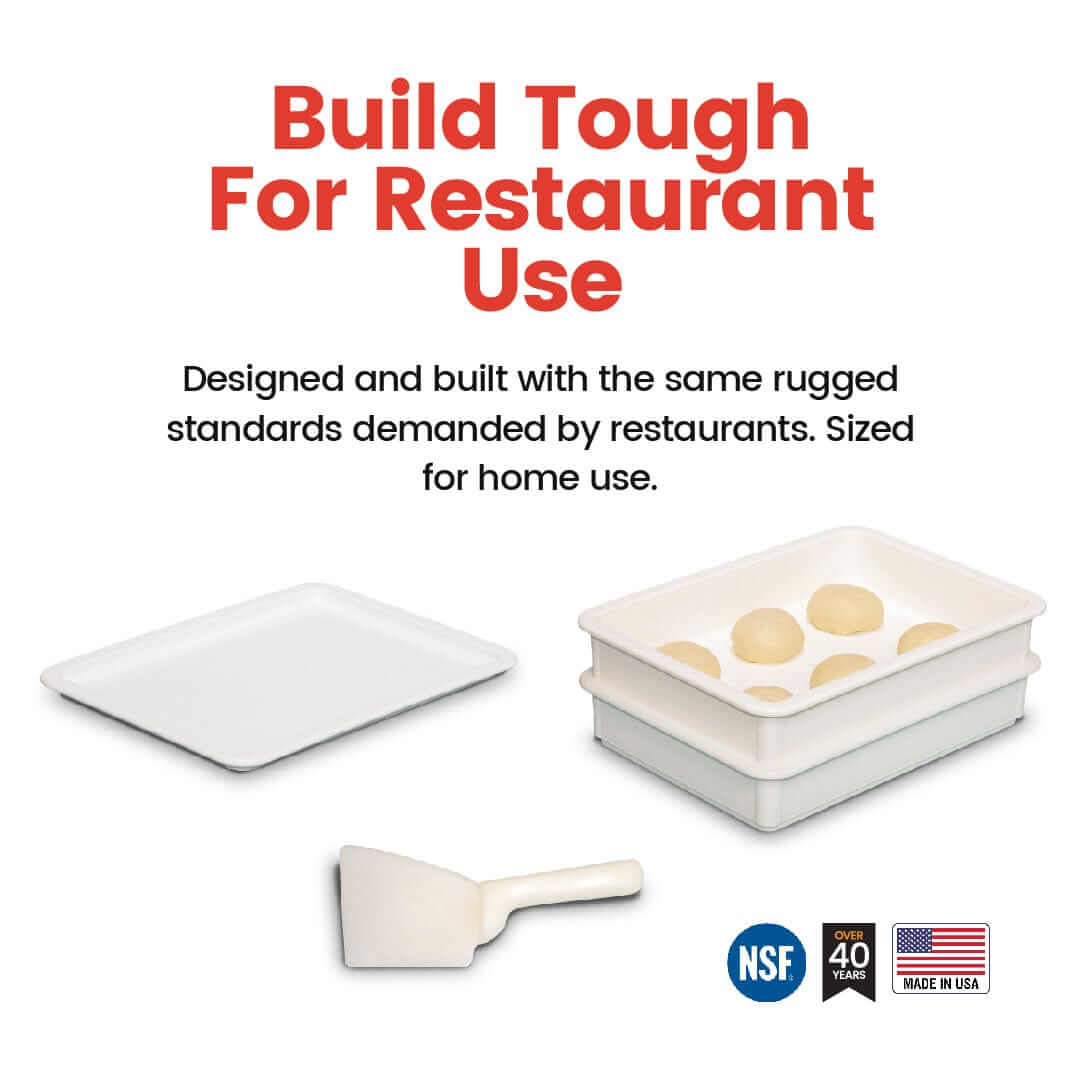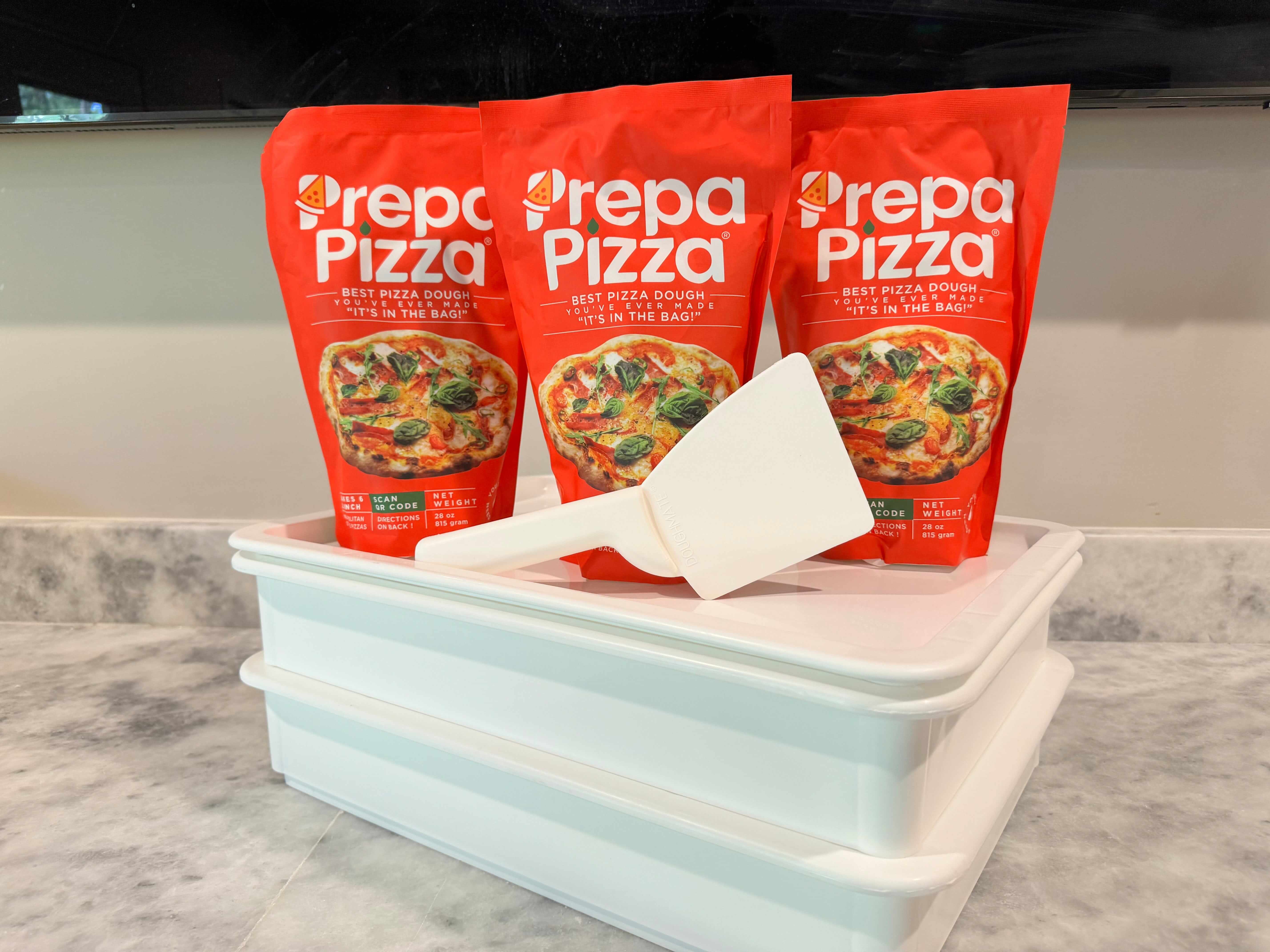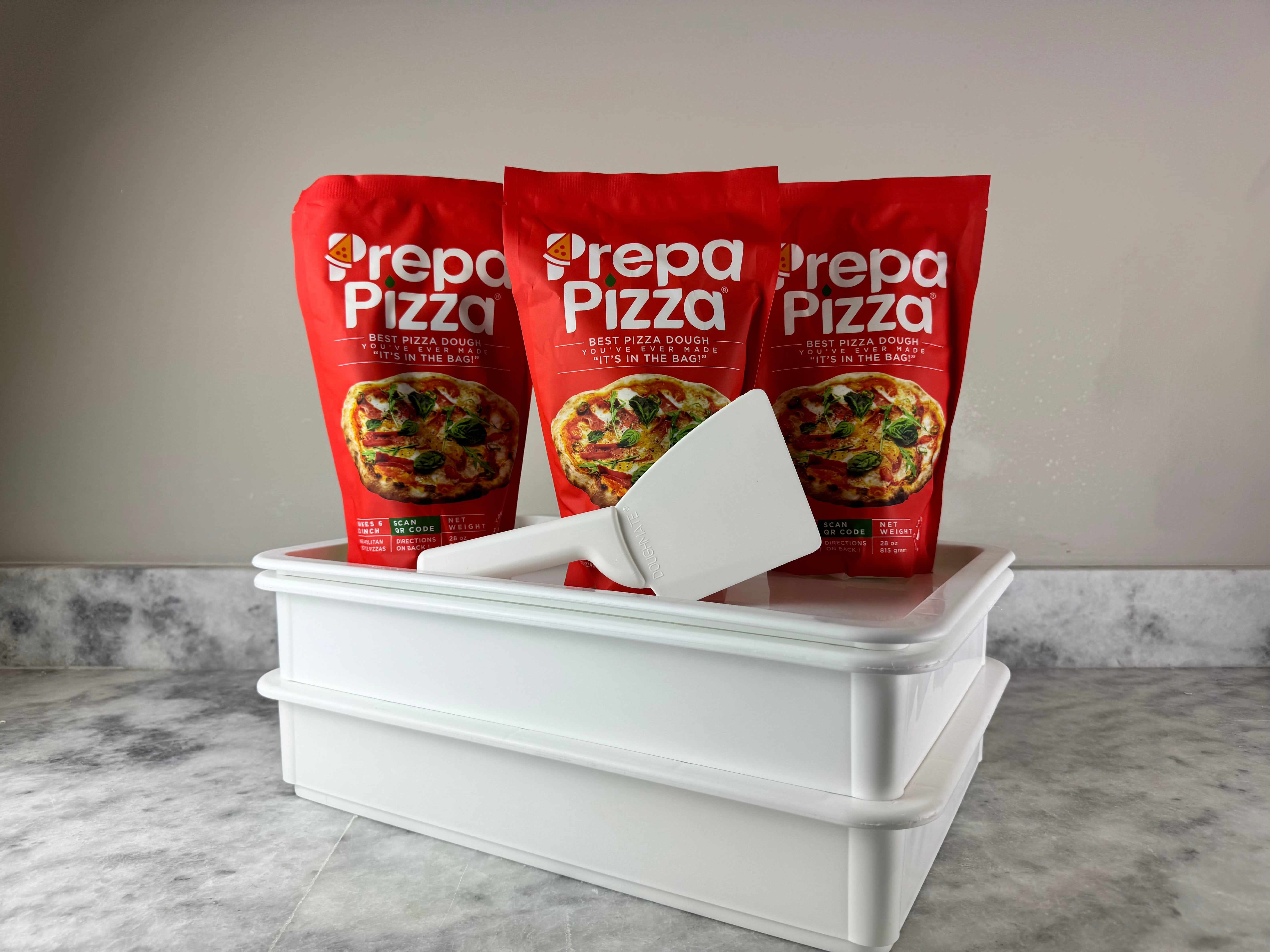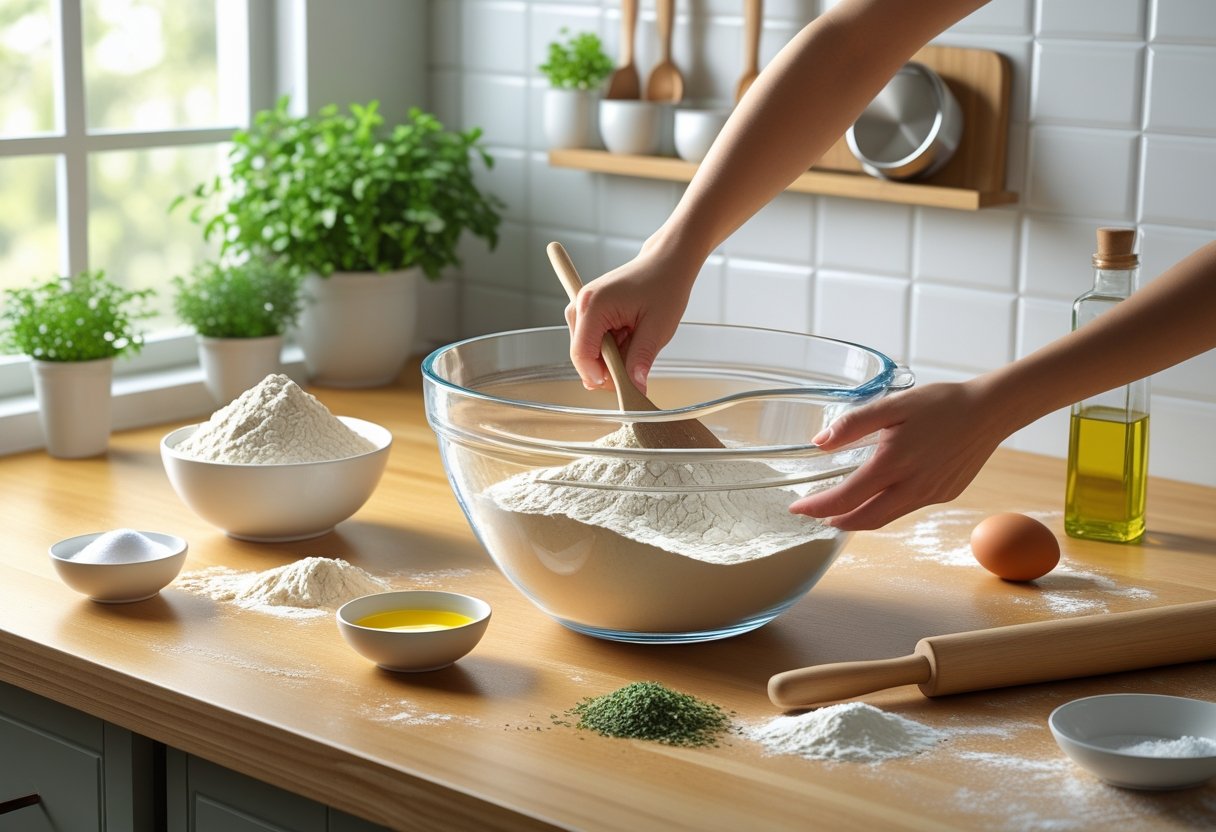
Easy Dough Recipe: A Simple Guide for Perfect Homemade Bread
Creating homemade dishes starts with mastering the right dough, and you don't need to be a professional baker to achieve great results. With Prepa Pizza's premade dough, you can effortlessly whip up a variety of delicious meals in no time. Whether you're in the mood for pizza, bread, or calzones, our dough is made from quality ingredients, ensuring you get that restaurant-quality taste right at home. You can find more about this convenient option here.
If you’re new to baking or just looking for a quick solution without compromising flavor, this easy dough recipe will become your go-to. You’ll learn simple techniques that make the process straightforward and enjoyable. From kneading to rising, this guide will help you every step of the way. With Prepa Pizza's dough as your base, you're set to impress family and friends with minimal effort.
Essential Ingredients for Easy Dough
Making easy dough requires a few essential ingredients that provide the foundation for texture and flavor. You'll find that understanding these components will help you create a consistent and delicious final product. If you're looking for convenience without compromising quality, consider using Prepa Pizza's premade dough, which you can explore here.
Choosing the Right Flour
Flour is the backbone of any dough. You generally have several options, but all-purpose flour is a reliable choice for beginners. It provides a balanced protein content that results in a chewy and pliable texture.
Alternatively, bread flour has a higher protein content, which contributes to a denser, chewier crust. If you're feeling adventurous, experimenting with whole wheat or specialty flours can add unique flavors and nutrients to your dough.
Regardless of your choice, ensure that the flour is fresh and properly stored, as stale flour can negatively affect the dough's outcome.
Understanding Yeast Types
Yeast is a crucial ingredient for leavening dough, which gives it rise. There are primarily two types of yeast you might encounter: active dry yeast and instant yeast.
Active dry yeast requires activation in warm water before use. In contrast, instant yeast can be mixed directly into your dry ingredients, making it more convenient. Understanding these differences can streamline your dough-making process.
Both types are effective, so choose based on your available time and preference. Make sure to check the expiration date to ensure potency for best results.
Water and Salt: Key Roles
Water is essential not only for hydrating the flour but also for activating the yeast. Ideally, use warm water, around 100°F to 110°F, to create the perfect environment for yeast activation.
Salt serves multiple purposes in dough. It enhances flavor and also regulates yeast activity, preventing overproofing. A standard ratio is about 1-2 teaspoons of salt per cup of flour.
Be cautious about adding too much salt, as it can inhibit yeast and lead to a denser texture. The right balance of water and salt is crucial for achieving the desired dough consistency.
Optional Additions for Enhanced Flavor
While the basic dough requires only essential ingredients, you can enhance flavor and texture with optional additions. Consider incorporating olive oil, which helps make the dough softer and adds richness.
You can also experiment with herbs, garlic powder, or cheese during the mixing process for an extra flavor boost. While not necessary, these additions can elevate your dough from standard to exceptional.
Choosing quality ingredients like Prepa Pizza's premade dough simplifies this process, offering you a convenient option without sacrificing flavor.
How to Make Easy Dough Step by Step
Creating easy dough involves a few fundamental steps that ensure success. From mixing the ingredients to kneading and proofing, you will gain the skills needed to prepare a versatile dough. If you prefer convenience, consider using Prepa Pizza's premade dough, which is crafted with quality ingredients for a restaurant-quality result. Learn more about it here.
Mixing the Ingredients
Start by gathering your key ingredients: warm water, yeast, sugar, flour, and salt. In a mixing bowl or food processor, combine 2 cups of warm water with 2 tablespoons of sugar and 2 teaspoons of yeast. Let it sit for about 5-10 minutes until it becomes frothy, indicating the yeast is activated.
Next, add 5 cups of flour and 1 tablespoon of salt to the mixture. If using a food processor, blend until the dough begins to come together. If mixing by hand, use a wooden spoon or your hands to combine the ingredients until a shaggy dough forms.
Kneading for the Perfect Texture
Once the dough is mixed, it's time to knead. Flour your work surface lightly to prevent sticking. Take the dough and fold it over onto itself, then push down and away with the heel of your hand. Rotate the dough a quarter turn and repeat this process.
Kneading should last about 8-10 minutes. You're looking for a smooth and elastic texture. If the dough feels too sticky, sprinkle a bit of flour as needed. Proper kneading develops gluten, which gives your dough its structure.
Proofing and Resting the Dough
After kneading, shape the dough into a ball and place it in a lightly oiled bowl. Cover it with a damp cloth. Allow the dough to proof in a warm area for 1-2 hours, or until it doubles in size. This step is crucial, as it helps the dough become airy and light.
If you're using Prepa Pizza's premade dough, the proofing step may be simplified. Follow the package instructions for the best results. Once proofed, gently punch down the dough to release the air and shape it for your desired use, whether that's pizza or bread.
Versatile Uses for Easy Dough
Using easy dough can greatly enhance your cooking experience. With premade dough from Prepa Pizza, you can create a variety of homemade delights quickly and efficiently. This high-quality dough allows you to explore flavors and textures, whether you’re in the mood for pizza or seeking soft, fluffy rolls.
Homemade Pizza
Homemade pizza is one of the most popular uses for easy dough. Start by preheating your oven to 475°F (245°C). Roll out your Prepa Pizza dough to your desired thickness on a floured surface. Transfer it to a pizza stone or baking sheet and add your favorite toppings. From classic pepperoni to gourmet vegetables, the options are boundless.
For a straightforward pizza recipe, layer tomato sauce, cheese, and toppings of your choice. Bake for about 12-15 minutes until the crust is golden brown. The texture achieved with Prepa Pizza’s dough is crisp yet chewy, making it an ideal foundation for your culinary creations.
Classic Dinner Rolls
Classic dinner rolls are simple yet satisfying. Begin by shaping pieces of your easy dough into small balls. Place them in a greased baking dish, ensuring they are close but not touching. Allow the dough to rise until doubled in size, which typically takes about 30 minutes.
Bake these rolls at 375°F (190°C) for 15-20 minutes until they are golden brown. Brush with melted butter right after baking for added flavor. These rolls serve as the perfect accompaniment for soups or as a standalone snack, showcasing the adaptability of your dough.
Soft Crescent Rolls
Soft crescent rolls are an excellent choice for a fluffy, buttery treat. Start by rolling out your easy dough into a large circle and cutting it into triangles. Roll each triangle from the wide end to the point to form crescents.
Let them rise for 20-30 minutes before baking at 350°F (175°C) for about 12-15 minutes. The result is soft, airy rolls that can be filled with jams, cheeses, or served plain. The versatility of Prepa Pizza dough allows you to explore various flavor pairings, making these crescent rolls a delightful addition to any meal.
Advanced Dough Techniques and Tips
Mastering dough techniques elevates your homemade pizza from ordinary to exceptional. Utilizing tools like a food processor can streamline your preparation. Additionally, knowing how to store or freeze dough effectively ensures that you always have high-quality dough ready when you need it. Consider using Prepa Pizza's premade dough for a quick and reliable base.
Using a Food Processor for Dough
A food processor is an excellent tool for making dough quickly and efficiently. Start by adding your dry ingredients, such as flour, salt, and yeast, to the bowl. Then, pulse to combine.
Next, gradually add in water or other wet ingredients while the processor runs. This method ensures a uniform mixture without overworking the dough.
Knead the dough briefly, about one minute, in the processor for optimal texture. This technique helps you achieve a consistent dough that forms well without excessive effort.
Using a food processor saves time and ensures your homemade pizza dough is ready to roll.
Storing and Freezing Dough
To keep your homemade pizza dough fresh longer, proper storage is essential. After preparing your dough, allow it to rise until doubled in size.
Once risen, you can either store it in the refrigerator or freeze it. For refrigerator storage, wrap the dough tightly in plastic wrap or place it in an airtight container. It will keep for up to three days.
If you choose to freeze the dough, portion it into individual balls to make future meal prep easier. Wrap each ball tightly in plastic wrap and place them in a freezer-safe bag.
When ready to use, simply thaw the dough in the refrigerator overnight or let it sit at room temperature for an hour. This ensures your dough maintains its quality whenever you need it.
Baking and Serving Suggestions
When preparing your dough, understanding the proper baking methods and equipment, achieving the right crust and crumb, and selecting toppings can elevate your dish. By utilizing Prepa Pizza's premade dough, you simplify the process while ensuring quality and taste. You can learn more about it here.
Baking Methods and Equipment
Choose the right baking equipment to achieve optimal results. Using a loaf pan for bread or a simple baking sheet for flatbreads will yield different textures. For pizza, a pizza stone can help create a crispy crust.
Preheat your oven to the recommended temperature, typically between 375°F to 475°F, depending on the recipe. Line your baking sheet with parchment paper to avoid sticking and to aid in cleanup.
When working with dough, ensure it’ s at room temperature for easier handling. If you're using Prepa Pizza's premade dough, it’s ready to be rolled out, making the process even more straightforward.
Perfecting Crust and Crumb
Achieve the perfect crust and crumb by managing hydration levels in your dough. Too much or too little water can affect texture.
For a chewy crust, consider adding a bit of cheese into the dough, or sprinkle it on just before baking. This technique not only enhances flavor but can also create a beautiful golden-brown crust.
During baking, monitor your dough closely. The crust should be firm and lightly browned while the crumb should be airy and soft. If you're trying a new recipe, take notes on bake times and temperatures for future reference.
Serving with Toppings and Fillings
Enhance your baked goods with flavorful toppings and fillings. For pizzas, classic options like mozzarella, pepperoni, or veggies pair well with a rich tomato sauce. Use grated cheese generously to create a delicious, gooey finish.
For bread, consider fillings such as herbs, garlic, or even cheese. These can be incorporated while shaping the dough or sprinkled on top before baking.
Experiment with flavor combinations that complement your dish. Sweet breads can be topped with cinnamon sugar or drizzled with glaze, offering a delightful contrast to savory options like an herb-infused loaf.
Frequently Asked Questions
Many people look for straightforward answers when it comes to dough recipes. From the simplest pizza dough to quick bread dough, these questions cover a variety of easy approaches. You can even find ways to make dough with just a few ingredients or without yeast.
What is the simplest pizza dough recipe?
The simplest pizza dough recipe typically consists of flour, water, yeast, and salt. Combine 2 cups of all-purpose flour with 1 teaspoon of active dry yeast and a pinch of salt. Add approximately ¾ cup of warm water and mix until a dough forms. Let it rise, and your dough is ready for pizza-making.
How can I make easy bread dough with minimal ingredients?
To make easy bread dough, you can use flour, water, and yeast. Mix 3 cups of all-purpose flour with 1 packet of yeast and a pinch of salt. Gradually add about 1½ cups of warm water. Knead until smooth, then let it rise in a warm place. Consider using Prepa Pizza's premium premade dough for a quicker option, which you can find here.
What is a quick and easy dough recipe for making pizza at home?
A quick and easy dough recipe for homemade pizza involves mixing 2 cups of flour with ¾ cup of warm water, a teaspoon of salt, and a teaspoon of baking powder for leavening. Stir until combined, then knead for a few minutes. This no-rise dough is convenient for immediate use.
How to create dough using just flour and water?
To create dough using just flour and water, mix equal parts of flour and water until a dough forms. A ratio of 2 cups of flour to 1 cup of water usually works well. Knead the mixture until smooth. This basic dough can serve various purposes, including pizza or flatbreads.
Can you make a no-yeast dough for pizza, and if so, how?
Yes, a no-yeast pizza dough can be made using flour, water, baking powder, and olive oil. Combine 2 cups of flour, 1 tablespoon of baking powder, and 1 tablespoon of oil with about ¾ cup of water. Mix and knead until consistent, then roll out for your pizza.
What are the steps for making a basic three-ingredient pizza dough?
For a basic three-ingredient pizza dough, combine 2 cups of flour, 1 teaspoon of salt, and ¾ cup of warm water. Mix the ingredients until it forms a dough. Knead briefly, then let it rest while you prepare your toppings. Using quality dough like Prepa Pizza can enhance your pizza experience, ensuring a premium result.




